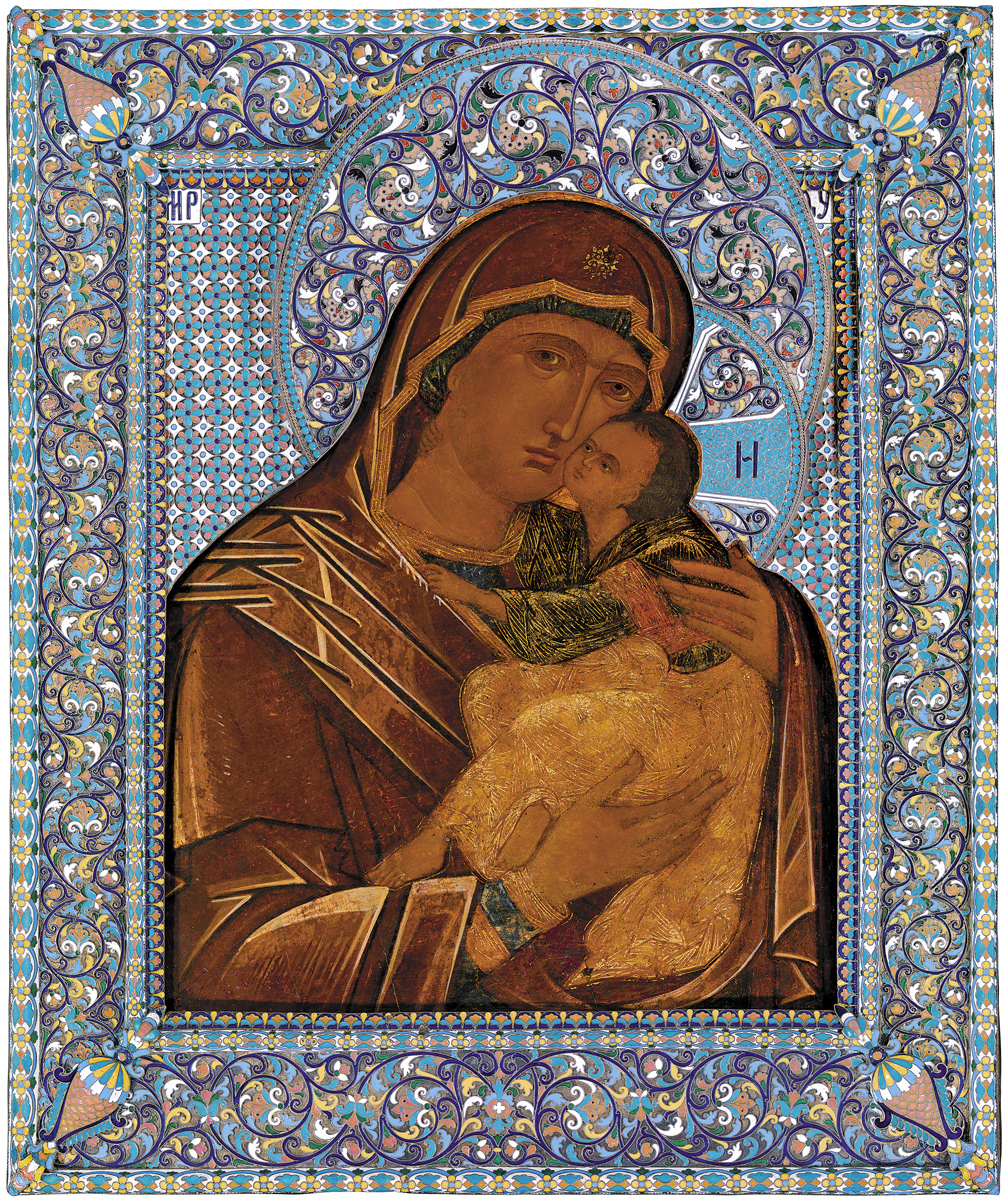MacDougall's Russian Art Auctions 1-2 Dec 2010
1 December 2010

614. AN IMPORTANT ICON OF THE VLADIMIRSKAYA MOTHER OF GOD IN AN ELABORATE SILVER AND CLOISONNÉ ENAMEL OKLAD
SECOND HALF OF THE 17TH CENTURY, MAKER'S MARK OF VASILY SALAMATIN IN CYRILLIC, SECOND HALF OF THE 19TH CENTURY
38.5 by 46.5 cm
100,000-150,000 GBP
The image of the Vladimir Mother of God represented on this icon was painted in the second half of the 17th century, probably at a workshop in the capital. The iconography differs from the classic iconography of the Vladimir Mother of God: the head of the Theotokos, which is inclined in an unusual way and the position of the Infant, lend extra expression and poignancy to their portrayal.
In the 19th century the borders of the icon were renovated and it was probably at this time that the unique enamel oklad was commissioned. The lower border of the oklad bears the stamp of Vasily Semyonovich Salamatin, the master silversmith working in Moscow in the late 19th to early 20th century. The oklad borders, haloes and background are entirely filled with plant designs in enamel, executed with unusual taste and refinement and referencing the best traditions of 17th century Russian enamellers. Despite the image and the oklad having been created at different times, they are distinguished by an unusual integrity and harmony of taste.
The environment in which this sacred object existed was probably in a household of Old Believers, where it would have been revered and passed down from generation to generation. This is suggested by the delicate 19th century renovation and the valuable oklad made for it, which is of outstanding artistic merit.
The icon of the Vladimir Most Holy Mother of God is considered the Protectress of Russia. Since 1480, the image of the Vladimir Mother of God has been in Moscow. Copies have been made by the best icon painters of all times since then, and in all centres of Russian icon production. To glorify the many miracles the icon has worked, believers have often donated or commissioned valuable oklads for ancient icons, both in churches and in domestic use. Oklads with enamel in the ‘a la russe’ style were very popular in Russia at the end of the 19th century. The strict geometrical rendering of the enamel background is separated from the plant designs on the borders by elegant indented and cylindrical beading. The applied edging, which repeats the design of the inner chamfer, frames the oklad around its perimeter. The rosettes in the corners are interesting hop shapes, which raise the corners to the same level as the edging.
The enamel painting technique demands a high degree of professionalism from the master craftsman, and works by the Moscow jeweller Vasily Semyonovich Salamatin are to be found in the State Historical Museum. The increased size of the oklad demanded a larger than normal amount of space in a high-temperature firing kiln, which speaks of a high cost and a bespoke commission.
Notes on symbols:
* Indicates 5% Import Duty Charge applies.
Ω Indicates 20% Import Duty Charge applies.
§ Indicates Artist's Resale Right applies.
† Indicates Standard VAT scheme applies, and the rate of 20% VAT will be charged on both hammer price and premium.